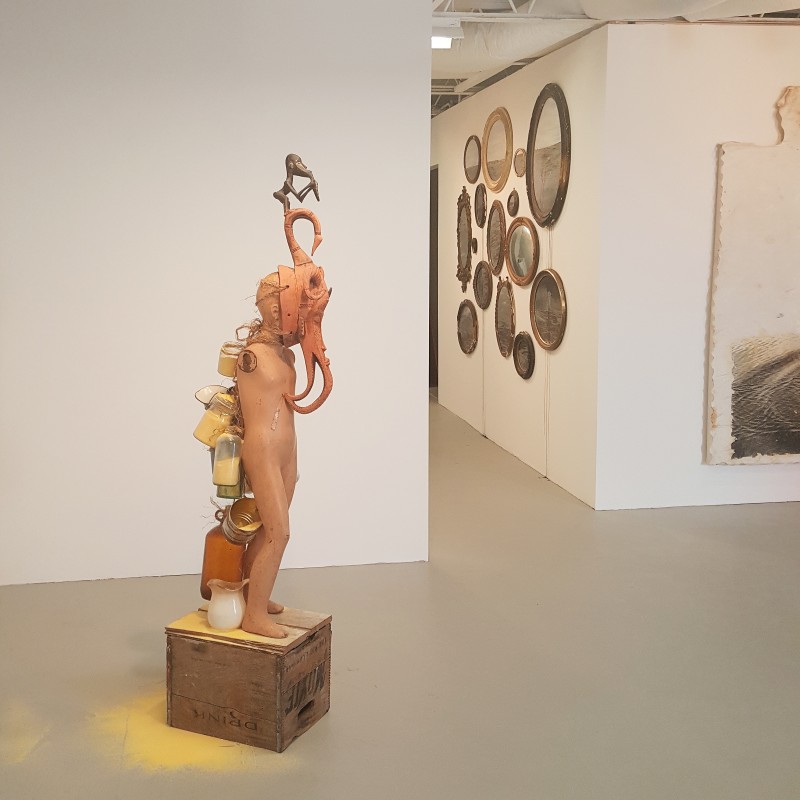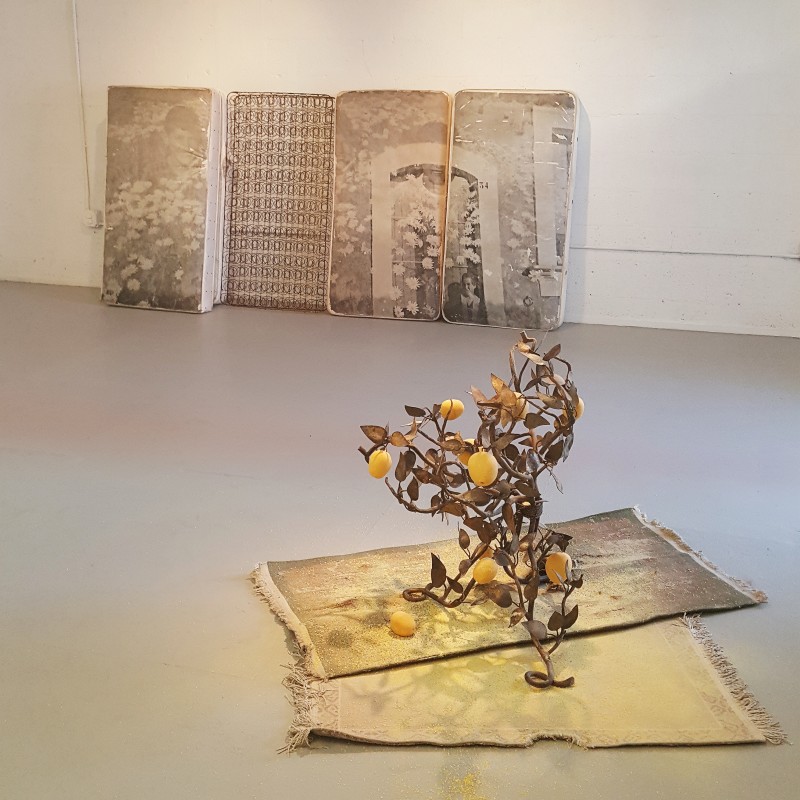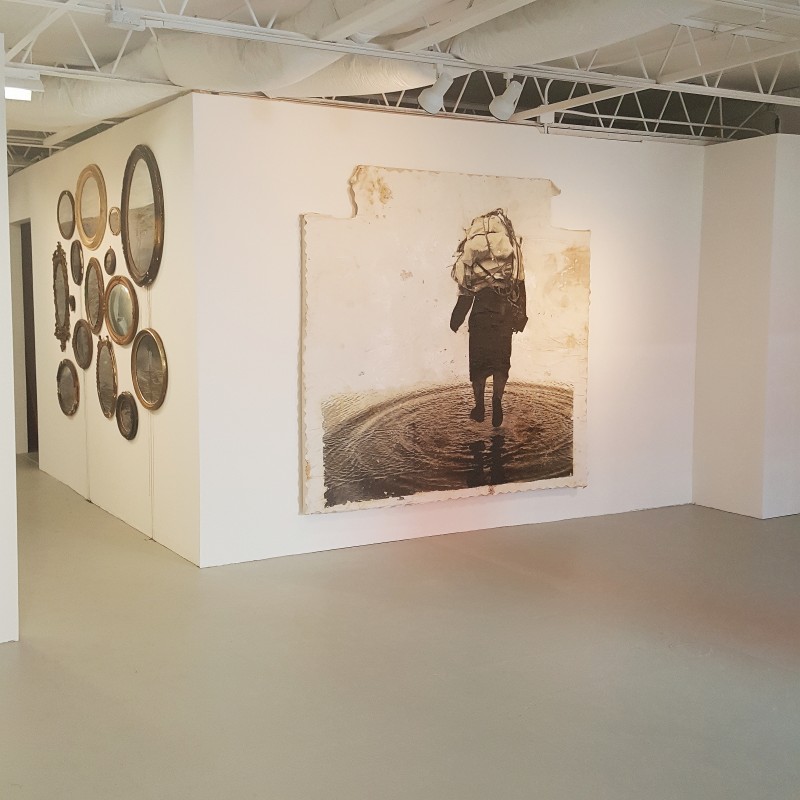Location: BRIDGE RED
Address: 12425 NE 13TH AVE, North Miami, FL 33161
Dates: Friday, April 8, 2018 | 4 pm – 7 pm
Exhibition Ends May 27th
In “The Mountain Without a Shadow” themes of displacement and cultural heritage permeate Anja Marais’ work. Often using photography combined with found objects, her work is imbued with a ritualistic quality. Central to Marais’ work is the disintegration of material, creating apt metaphors for the human condition, geography, and memory.
Born in South Africa and now living in Miami, Marais’ work challenges the viewer to rethink the meaning of systematic conditioning. Photography forms the basis of much of her mixed media work, but she also employs more archaic materials like maize, soil, rust, etc to realize her works.
Whilst Marais’ work subtly alludes to the impact of racism in South Africa – a country immersed in political and social turmoil during her upbringing – her themes have a universal appeal. Marais reinforces this:
‘…. I am interested in interpreting direct experiences that contradict our conditioning. With first-hand experience we don’t see things as they are, but how we see them as we are. An opportunity to discover dissonance between what we know and what we are born with ‘
The exhibition comprises nine of Marais’ most telling works from multiple projects around ‘the sins of the fathers’. In ‘The Transparency of Rocks‘, one of the larger pieces in the exhibition, Marais combines images of a child merging with rocks, a reflection on carrying the transgressions of our forefathers.
In ‘A Poem for the Sharpevilles‘, she uses press images from traumatic events in history and washes them away to recede and merge into the landscape, an attempt to memorialize landscape as a mute witness to the actions of man.
Also featured are recent sculpture works. These include found objects enmeshed with Maize. Corn is a staple food in Africa as in many other countries and is used in rituals of the ancestors.
“Libation for the Lineage of the Unlived.” is a video work that combines ritual and ethnopoetics bringing the outside and ‘other’ world into the space of the gallery.





